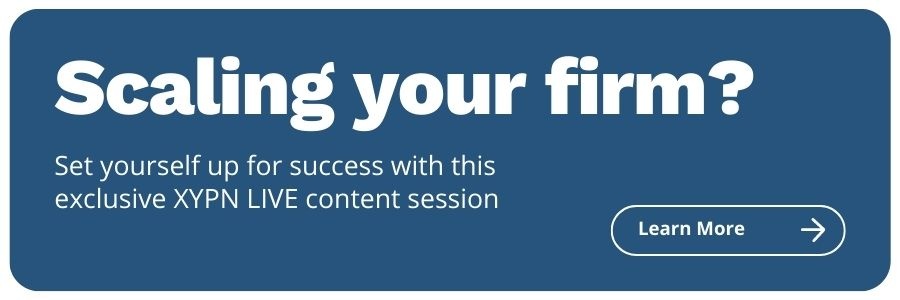How to Have Difficult Conversations About Diversity
Share this
Having difficult conversations sucks. Often you feel like you’re running in circles, going over and over the same issues and not being heard. When the conversation turns to race, gender and sexual orientation, discussions become especially difficult. So much anxiety, shame, fear and vulnerability is involved.
I joined XYPN’s diversity committee and spoke on its panel so I could be the change that I want to see in this industry. I want to help spur ideas, conversations and actions that could improve all of our lives through inclusion. In the Diversity Committee, I’ve found others who believe in the same goal and want to create a safe space for these things to take place.
As one of our first initiatives, we’re holding a town hall for XYPN members on how to have effective conversations on sensitive subjects like diversity. We’re very lucky to have conflicts resolution expert Maggie Lea of the Denver Foundation leading the discussion and helping us all understand what we can do to make these difficult conversations easier and more effective. Here’s a preview of what we’ll talk about:
Why these conversations are important
In his extremely popular Ted Talk and the book, Start with Why, Simon Sinek argues that the most inspirational leaders motivate others to action by explaining why they do what they do (i.e., the purpose, cause, belief). Only after nailing down the “why” can you address how things need to be done and what the result will be.
Our “why” is that we believe difficult diversity conversations need to take place in order to make us all more knowledge, more accepting and better people. Avoiding these conversations will only make the problem worse.
Last year, Kira Hudson Banks wrote an article for the Harvard Business Review about how avoiding discussions about racial tension can lead to stakeholders feeling unheard, perpetuating a cycle of misunderstanding and misinformation. Fear of “saying the wrong thing” can actually result in worse outcomes. Using race relations at the University of Missouri as an example, according to Banks, it wasn’t the racist incidents themselves that caused the former president of the university system to lose his job. It was the fact that he failed to acknowledge and discuss the racist incidents on campus that created more of a problem.
Like Lea, Banks argues that ignoring the truth only makes the problem bigger. So instead we should lean into the conflict and learn skills on how to effectively navigate the situation:
Instead of getting surprised by conflict, expect it, and lean on management and facilitation skills that include listening, being color-cognizant rather than color-blind, responding non-defensively, being open to learning, and self-reflecting about how personal and social identities can influence these interactions.
Banks backs up her claim by citing research that shows employees are more productive and exhibit stronger problem-solving skills when working in diverse groups. Lea agrees, “Difficult conversations are opportunities for increased awareness, mutual understanding, and growth.”
How to Have These Conversations
According to Lea, what makes most conversations difficult is not necessarily the content of the exchange, but the context — specifically our feelings and emotional investment around it. “Many of us have been conditioned by society to not speak our minds, and so we haven’t acquired the skills of navigating difficult conversations,” Lea says. “Without practice in something, confidence lacks, and fear often sets in.”
In the end, we’re worried about our identity and self-preservation. In order to make these conversations less difficult and more effective, Lea suggests to get outside of ourselves and focus on the other person. And that starts with empathy.
The Merriam Webster dictionary defines empathy as:
The action of understanding, being aware of, being sensitive to and vicariously experiencing the feelings, thoughts and feelings, thoughts, and experience of another of either the past or present without having the feelings, thoughts and experiencing fully communicated in an objectively explicit manner.
In short, empathy is being able to put yourself in someone else’s shoes in order to understand their point of view. As an extremely left-brained person, I’ve found empathy incredibly hard. It takes being able to 1) understand and channel emotions you feel in a specific situation and 2) projecting that same feeling to what another person is feeling in a different circumstance.
Despite the trickiness of learning how to empathize, being able to do so can have a profound impact on effective change. A 2016 study authored by David Broockman at Stanford University and Joshua Kalla at the University of California Berkeley found that a simple 10-minute, non-confrontational conversation could significantly help combat anti-transgender attitudes. The basis of the study was a canvasser, who could be trans or not, asking people to put themselves in the shoes of trans people in order to combat anti-trans sentiment. The trial found that anti-trans sentiment declined and remained lower for the following three months.
Lea offers specific ways you can empathize with other people and have them empathize with you.
-
Start from a place of humility: Genuine curiosity, vulnerability and respect for the other person as well as yourself typically elicits mutual trust and facilitates shared understanding.
-
Approach the conversation with an interest in problem solving, instead of needing to be “right”: Frame the conversation in a way that puts you and the other person (or people) shoulder-to-shoulder, tackling a problem together.
-
Focus on what you’re hearing, not what you’re saying: For every statement the other person makes, restate it in your own words to signal you’re listening and that you want to understand.
-
Put yourself in the other person’s shoes: In doing so, consider how this allows you to gain some distance from your own experience, and consider how the other might interpret the same situation.
-
Expect a positive result: Focus your attention on the possibility of mutual gain. When your attention is focused on potential benefits of the conversation, it will shift your thinking towards a more constructive approach.
What You Can Expect from Succeeding at these Conversations
Now that we know why these conversations are important and how we should approach them, we can’t end without talking about the benefits of having effective, transformative discussions.
Study after study has shown that being inclusive and diverse in your workplace generates positive, bottom-line results. For instance, support for diversity:
- Helps people hear and share different perspectives and ideas that can inspire creative and motivation
- Produces greater opportunities for professional and personal growth
- Expands business opportunities in your local area and beyond
- Enhances productivity and teamwork
As I mentioned in the beginning, we all benefit from diversity and inclusion. But it won’t happen by itself. We have to do our part to be the change that we want to see, create safe spaces for these types of conversations and learn how effectively navigate difficult topics.
 About The Author
About The Author
Brian Thompson, JD, CFP® is the founder of Brian Thompson Financial LLC. After a decade representing individuals and businesses as a tax attorney, he wanted to make a bigger impact and help his peers navigate the critical financial decisions that come with adulthood through knowledgeable, client-focused advice. His firm specializes in helping LGBTQ couples set and achieve their goals, protect and grow what they already have and guide them to a lifestyle that brings them fulfillment and happiness.
Share this
- Advisor Blog (720)
- Financial Advisors (243)
- Growing an RIA (128)
- Business Development (94)
- Digital Marketing (94)
- Marketing (91)
- Community (82)
- Start an RIA (76)
- Coaching (73)
- Running an RIA (72)
- Compliance (70)
- Client Acquisition (68)
- Technology (67)
- Entrepreneurship (64)
- XYPN LIVE (64)
- Fee-only advisor (49)
- Sales (49)
- Bookkeeping (46)
- Client Engagement (45)
- Practice Management (44)
- XYPN Books (43)
- Scaling an RIA (42)
- Investment Management (41)
- Client Services (31)
- Employee Engagement (31)
- Lifestyle, Family, & Personal Finance (31)
- Financial Education & Resources (30)
- Market Trends (25)
- Journey Makers (23)
- Process (18)
- Niche (13)
- SEO (9)
- Career Change (8)
- Partnership (8)
- Transitioning Your Business (7)
- Sapphire (6)
- Persona (4)
- Transitioning To Fee-Only (4)
- Emerald (3)
- Social Media (3)
- Transitioning Clients (3)
- RIA (2)
- Onboarding (1)
Subscribe by email
You May Also Like
These Related Stories

How to Promote Diversity in Your Business
April 9, 2018
5 min read

How to Conference Like a Pro: What Would Arlene Say?
Mar 29, 2018
13 min read






